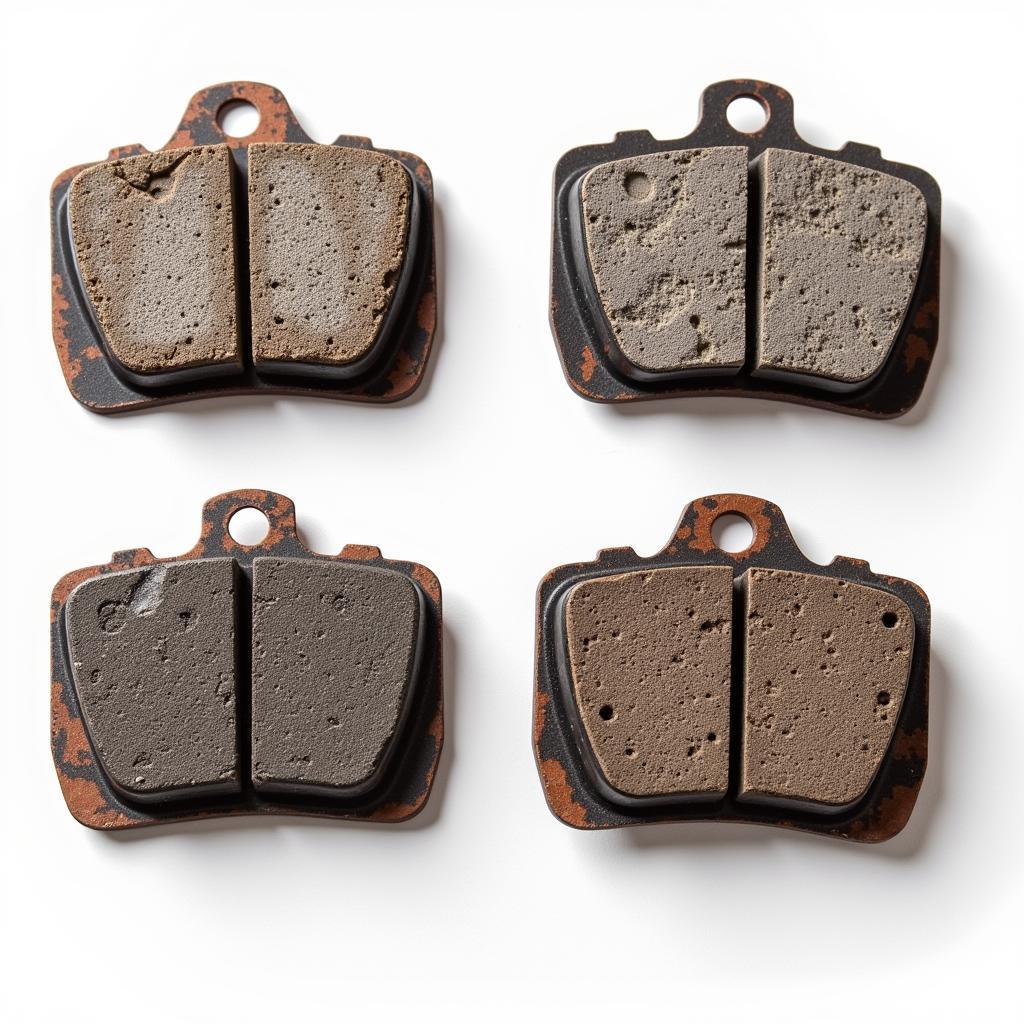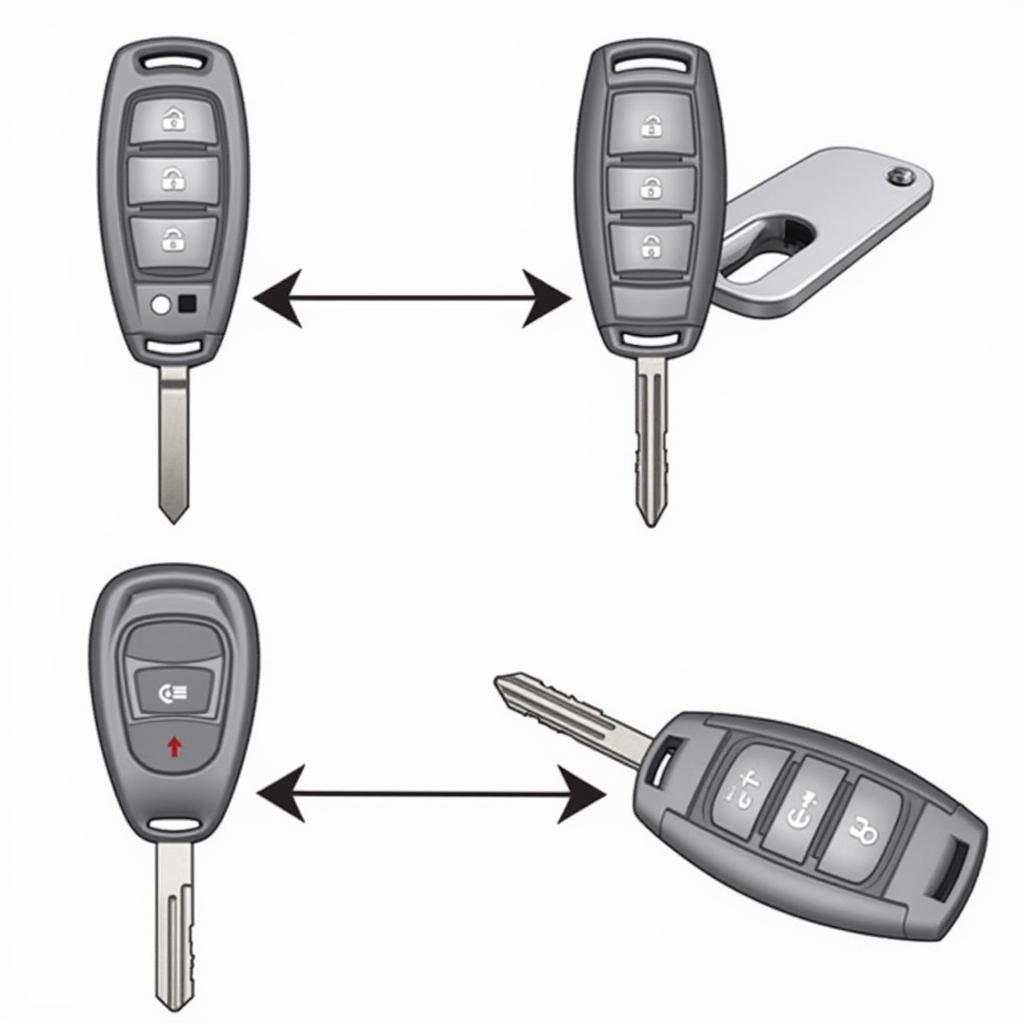The shoe and brake pedal warning light is a crucial indicator of potential issues within your vehicle’s braking system. Ignoring this warning could lead to serious safety risks, making understanding its meaning and appropriate actions paramount. This guide delves into the causes, diagnostics, and solutions for this important warning light.
If you’re experiencing issues with the Nissan brake warning system, you might find our article on nissan shoe and brake pedal warning light helpful.
Understanding the Shoe and Brake Pedal Warning Light
The shoe and brake pedal warning light, often depicted as a circle with an exclamation mark inside, surrounded by parentheses, usually signifies a problem with your parking brake. In some vehicles, it might also indicate low brake fluid or worn brake pads, often accompanied by a separate warning light. Understanding the specific meaning for your vehicle model is essential.
Common Causes of the Warning Light
Low Brake Fluid
One of the most common reasons for the shoe and brake pedal warning light is low brake fluid. This can be due to a leak in the brake lines, worn brake pads, or a faulty brake master cylinder.
Parking Brake Engaged
Sometimes, the simplest explanation is the correct one. If your parking brake is even slightly engaged, the warning light might illuminate. This is a safety feature designed to remind you to disengage the brake before driving.
Worn Brake Pads
Worn brake pads can also trigger the warning light. As the pads wear down, the brake fluid level drops, activating the sensor that illuminates the light. Ignoring this warning can lead to metal-on-metal contact, damaging your rotors and significantly reducing braking efficiency.
Faulty Brake Sensor
Occasionally, the brake sensor itself can malfunction, triggering the warning light even when there’s no actual problem with the braking system. This requires diagnostic testing to confirm.
Issues with the ABS System
In some vehicles, the shoe and brake pedal warning light can also indicate problems with the Anti-lock Braking System (ABS). This might be accompanied by the ABS warning light.
Diagnosing the Problem
Visual Inspection
Begin by checking your parking brake. Ensure it’s fully disengaged. Next, inspect the brake fluid level in the master cylinder reservoir. If it’s low, top it off and monitor for further drops, which would indicate a leak.
You may find this resource on chevy sonic brake warning light useful if you own a Chevy Sonic.
Professional Diagnostics
If the fluid level continues to drop or the warning light persists, it’s crucial to have a professional diagnose the problem. They can use specialized diagnostic tools to pinpoint the exact cause and recommend the appropriate repairs.
How to Fix the Shoe and Brake Pedal Warning Light Issue
Addressing Low Brake Fluid
If the brake fluid is low, add the correct type of brake fluid recommended by your vehicle manufacturer. If the fluid level drops again quickly, you likely have a leak that needs immediate professional attention.
Dealing with Worn Brake Pads
Worn brake pads should be replaced promptly by a qualified mechanic. Continuing to drive with worn pads can cause serious damage to your rotors and compromise your safety.
 Worn Brake Pads Triggering Warning Light
Worn Brake Pads Triggering Warning Light
Addressing Faulty Sensors or ABS Issues
If the problem lies with a faulty sensor or the ABS system, a qualified technician will need to diagnose and repair or replace the faulty components. Modern vehicles often require specialized software and equipment for these repairs. Remote diagnostic and programming services can be an effective solution in some cases.
For issues related to the Mercedes Sprinter’s brake warning system, check our guide on mercedes sprinter red brake warning light.
Conclusion
The shoe and brake pedal warning light is a critical safety indicator. Ignoring it can lead to costly repairs and potentially dangerous driving conditions. By understanding the potential causes and taking appropriate action, you can ensure the safety and reliability of your vehicle’s braking system. Don’t hesitate to seek professional help if the warning light persists or if you are unsure about any aspect of your vehicle’s braking system.
FAQ
-
What does the shoe and brake pedal warning light mean? It typically indicates a problem with your parking brake, low brake fluid, or worn brake pads.
-
Is it safe to drive with the warning light on? No, it’s not advisable. It indicates a potential issue with your braking system which could compromise your safety.
-
Can I fix the problem myself? While you can check the parking brake and brake fluid level, more complex issues require professional diagnosis and repair.
-
What should I do if the light stays on after adding brake fluid? This indicates a potential leak or another issue within the braking system, requiring professional attention.
-
How often should I check my brake fluid? Checking your brake fluid level monthly is recommended as part of regular vehicle maintenance.
-
What if the warning light comes on intermittently? Intermittent warnings can also indicate a serious problem and shouldn’t be ignored. Consult a mechanic for diagnosis.
-
What type of brake fluid should I use? Consult your owner’s manual for the specific type of brake fluid recommended for your vehicle.
Here are some other resources you may find helpful: warning parking brake off freightliner and warning brake light.

